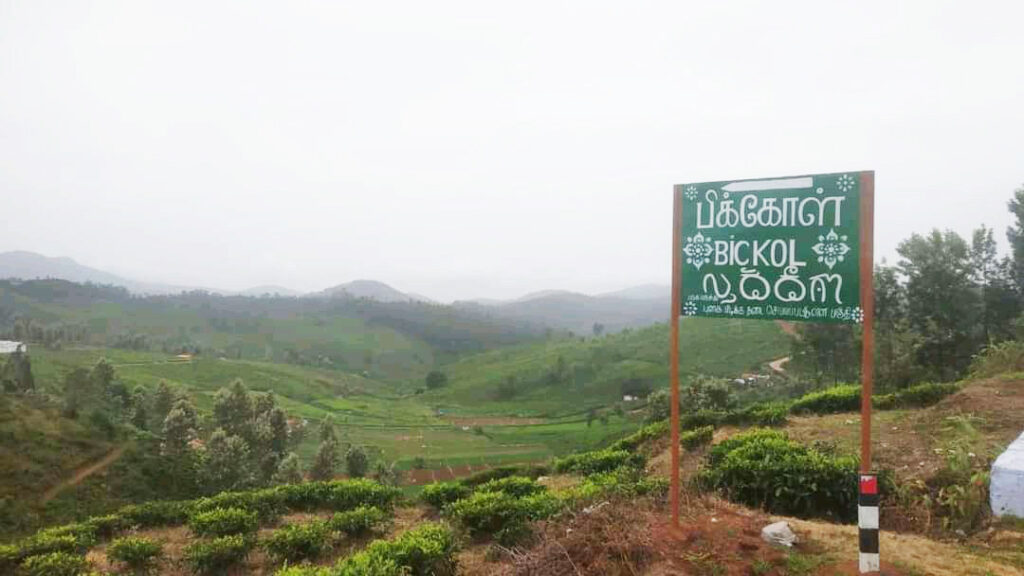Wherever there is a minority community, especially a scattered minority community, it is not unusual to have more than one script for the language, sometimes competing with each other.
The Badugu Raju script (so named to distinguish it from other Banugu scripts) was invented by Anandhan Raju in 2009 for Badaga, a South Dravidian language spoken by people in the Nilgiri Hills, Tamil Nadu, India.
Anandhan, from Thangadu Oranaai, is presently the Computer Science Teacher in Chamraj Higher Secondary School, Chamraj. He writes:
“It gives me great pleasure to announce that I have developed an alphabet for Badugu, a language hitherto without a writing system, spoken by a member of one of the native peoples of the Nilgiris called Badaga. What is more, I have created a true type font and named it BaduguAnandha using a computer program.
“Inspired by my father Sri.R.Raju son of late Sri B.Ranga Gowder of Thangadu Oranaai, I took to researching the Badugu language, my mother tongue. Studying the phonology of Badugu had indeed been a labour of love to me. Though a Baduga, I learned Badugu afresh in order to have a very good understanding of the system of sound patterns of the language, which later proved to be a groundbreaking piece of research. It would be ungrateful if I did not acknowledge Rev. Philip Mulley for his help during the research.
“What I discovered was a notably unique feature of the Badugu vowel system. It is the presence of Retracted Vowel sounds. I call them so, because when articulating these vowels, the tongue retracts automatically. It is my contention that the Retracted Vowel sounds antedate the Retroflex sounds. It can clearly be seen that a presumptive pattern of sound change had occurred over the years. The Retracted Vowel sounds found the Retroflex sounds as their complementary sounds i.e. retraction of the tongue by natural process complemented with flexion of the tongue resulted in retroflexion of the tongue. It is evident that when you articulate a vowel sound that immediately precedes a retroflex sound the tongue retracts giving way to flexion naturally. From the foregoing, it is quite possible to say that Badugu is one of the Proto-South-Dravidian dialects that has undergone separate linguistic development despite the fact that it resembles Kannada in certain correspondences jointly in sound and in meaning. It is to be noted that Badugu shares such systems not only with Kannada but also with other Dravidian languages too.
“Badugu is a separate language having a typical phonological structure. The autonomous status of Badugu has been hinted at in “Language and Society in South Asia by Michael C.Shapiro and Harold F.Schiffman, 1981:100”. A separate language suggests a separate alphabet specially developed for it. ”
Arguing that neither the Tamil nor the Kannada scripts would adequately represent all the sounds in Badugu, he concluded:
“It is my conviction that Badugu must have a separate writing system because it is a separate language. I hope every Baduga would proudly welcome the development of the Badugu Alphabet and the creation of a Badugu Font and use them to read and write Badugu henceforth to keep the Badugu language alive.”
Only one problem: it is not clear whether anyone is actually using Raju’s script. Instead, in 1967-68 another Badaga script, referred to as Badugu Raj after its creator, Yogesh Raj of Kadasoley village, has received official recognition from Baduga Mahajana Sangha, the umbrella organization of Badagas. The Badugu Raj script can be seen on multilingual/multiscriptural signage in the region, and is reportedly been taught in various villages.
And there are reports of yet another Badugu script created by Chutti Saravanan in 2010, about which we, for now at least, know nothing.

This entry is clearly threadbare, and relies on very few sources. We would love to hear from anyone who can add to our meagre knowledge.
11.3744° N, 76.7620° E